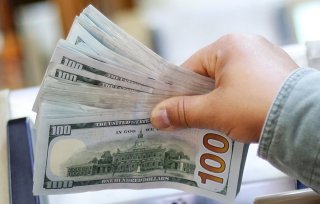$25,000 'Stimulus Check' to Help Pay Rent? Here Is How to Qualify.
Some of the hardest-hit amid the ongoing pandemic are renters who have to fork over as much as two or three thousand dollars to their landlords each and every month. But help is on the way.
Studies and surveys over the past year have shown that coronavirus stimulus checks can only go so far, with many lasting only a few weeks or a couple of months.
With this in mind, it appears that some of the hardest hit amid the ongoing pandemic are renters who have to fork over as much as two or three thousand dollars to their landlords each and every month.
But thanks in part to President Joe Biden’s $1.9 trillion American Rescue Plan, there is indeed help on the way to the tune of more than $46 billion. For those who qualify, they could be on the receiving end of a whopping $25,000, depending on where they live, which includes up to eighteen months of assistance that will cover both missed and future rent.
“The Treasury (Emergency Rental Assistance) program includes an unprecedented amount of funding for emergency rental assistance to help renters stay stably housed,” the National Low Income Housing Coalition states.
According to one recent University of California study, renters falling behind on their payments has become a growing issue. The data indicate that landlords were collectively owed more than $20 billion in back rent from their tenants. And this has become an even more urgent problem as the federal eviction moratorium is set to expire on June 30.
“There’s concern that we are going to be facing an ‘eviction cliff’—that we’re going to see a large number of renter households across the United States evicted from their homes,” Carolina Reid, faculty research adviser for University of California Berkeley’s Terner Center for Housing Innovation, said in a statement.
“The data point to significant economic hardship,” she added.
In order to be eligible for the benefits, at least one member of a household must qualify for unemployment. In some cases, it may be okay to state in writing that the pandemic has caused so much financial hardship that it made it impossible to pay rent. In addition, income from 2020 must be below eighty percent of the surrounding community’s median income.
Do take note that there is help out there for homeowners as well via the nearly $10 billion Homeowners Assistance Fund (HAF).
“The purpose of the Homeowner Assistance Fund is to prevent mortgage delinquencies and defaults, foreclosures, loss of utilities or home energy services, and displacement of homeowners experiencing financial hardship after January 21, 2020,” the Treasury Department writes on its website.
“Funds from the HAF may be used for assistance with mortgage payments, homeowner’s insurance, utility payments, and other specified purposes. The law prioritizes funds for homeowners who have experienced the greatest hardships, leveraging local and national income indicators to maximize the impact,” it continues.
To receive direct cash from this fund, a homeowner must have experienced financial hardship after January 21, 2020, have income equal to or less than 150 percent of the area median income, have proof of the stated financial hardship, and have a mortgage balance of less than $548,250.
Ethen Kim Lieser is a Minneapolis-based Science and Tech Editor who has held posts at Google, The Korea Herald, Lincoln Journal Star, AsianWeek, and Arirang TV. Follow or contact him on LinkedIn.
Image:

